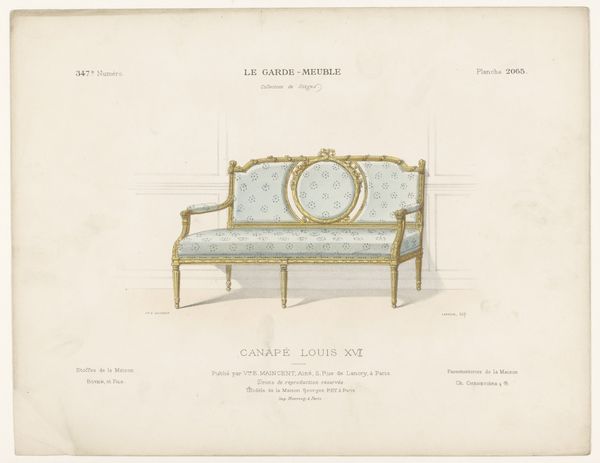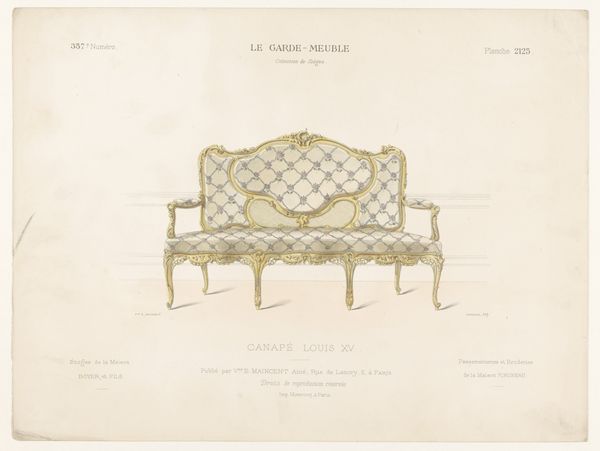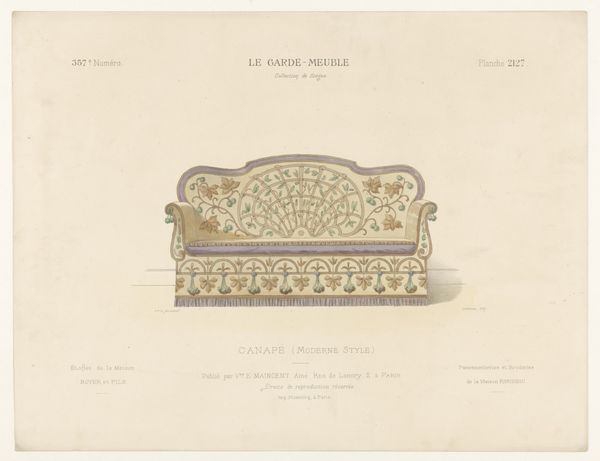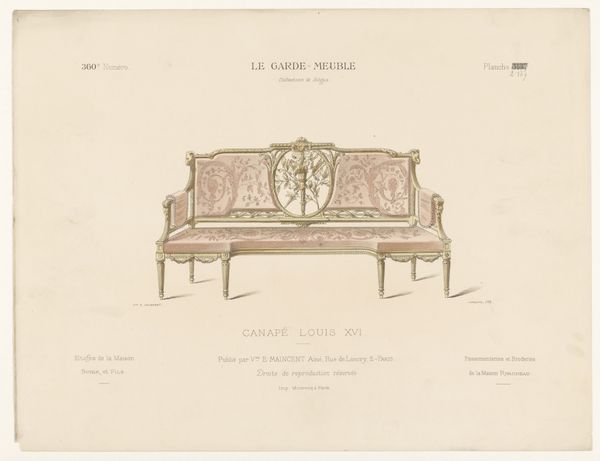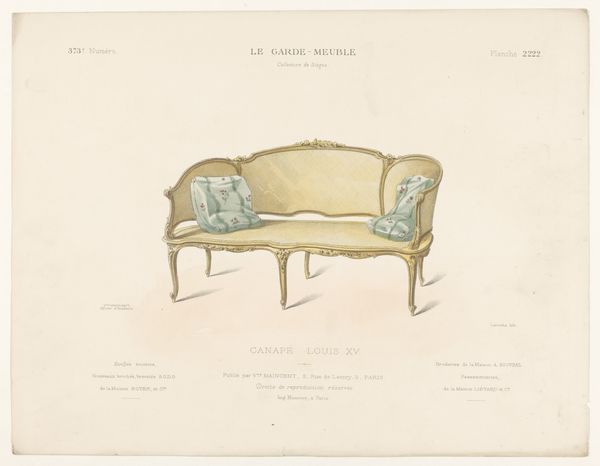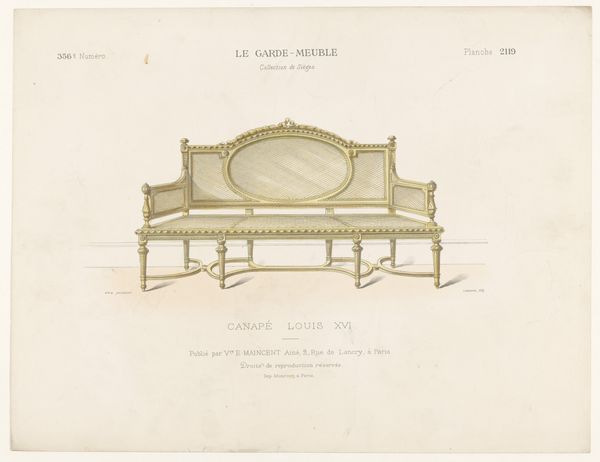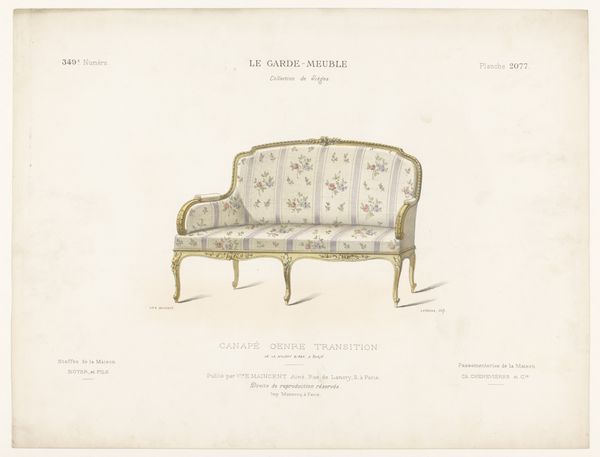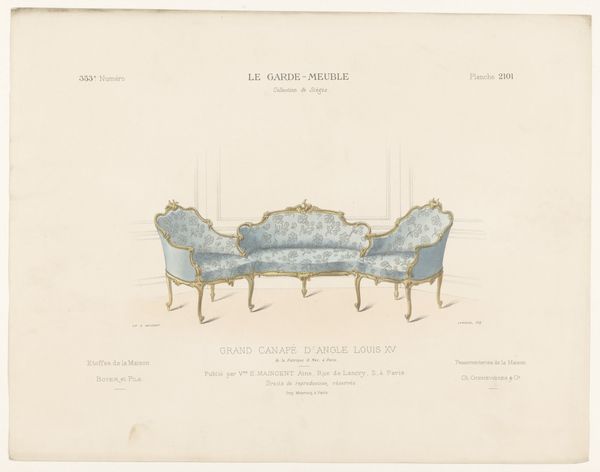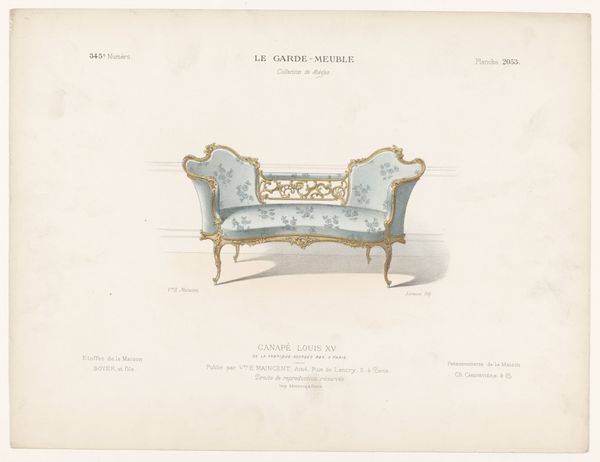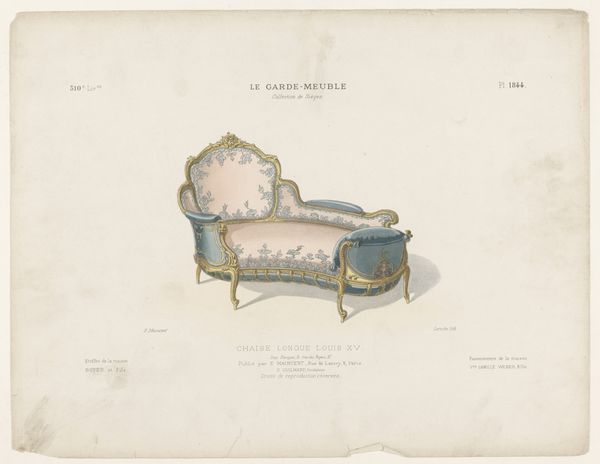
Dimensions: height 276 mm, width 358 mm
Copyright: Rijks Museum: Open Domain
Curator: So, what strikes you first about this print, the “Canapé” from between 1895 and 1935 by Léon Laroche? Editor: It's delicate. It seems to depict a piece of furniture, a sofa, quite elegantly through etching, pen, and other printing techniques. It’s so meticulously rendered; it's almost as if I am looking at a diagram. What stands out to you? Curator: This isn't merely a diagram. Notice the Louis XVI reference in the title. What emotions, what sense of history, do you associate with that era? The sofa becomes a symbol of the aristocratic lifestyle, a representation of power and privilege on the cusp of radical change. Editor: I guess I do associate that style with royalty. The French Revolution ended that period. But here it is printed years later. Why? Curator: Precisely! This is a memory object. It's an exploration of Neoclassicism, and it taps into a longing for an imagined past, even with all the original historical complexity. How does the very *idea* of such a canapé persist culturally? Editor: It’s funny how furniture can represent those concepts. Looking at the image closer, I see recurring motifs of ornamentation – maybe shells and flowers? Do they play a part in this? Curator: Yes. Floral motifs, for instance, represent rebirth and beauty, perhaps a nostalgic nod to simpler, more aesthetic values. Consider what emotional meaning these designs would have held for people familiar with the social upheaval of the late 19th and early 20th centuries, when this print was made. It revives historical meaning through furniture. Editor: I see, a physical reminder of an almost forgotten history and social class. I now appreciate this print much more, thanks! Curator: And now perhaps, we both are ready to seek beauty in history beyond the throne.
Comments
No comments
Be the first to comment and join the conversation on the ultimate creative platform.
